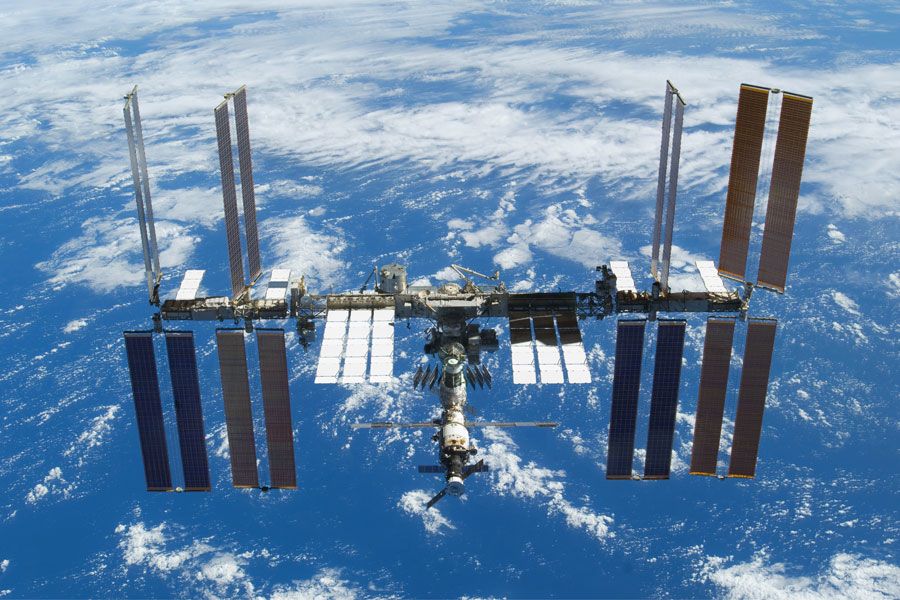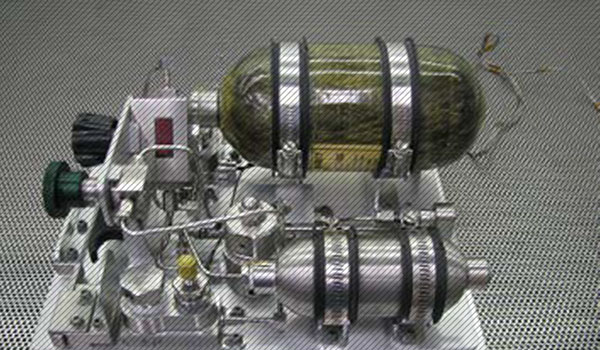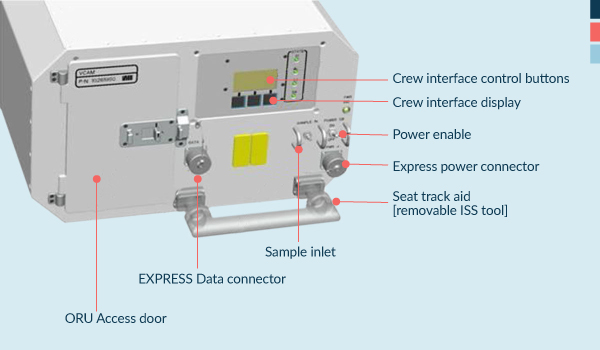Above:
The International Space Station is becoming an increasingly busy platform for studying our home planet.
VCAM GC-MS
Miniaturizing Mass Spectrometry
Murray Darrach
Vehicle Cabin Atmosphere Monitor (VCAM) identified gases that are present in minute quantities in the International Space Station, breathing air that could harm the crew's health. After this successful deployment, instruments like VCAM could accompany crewmembers during long-duration exploration missions.
A miniature gas chromatograph and mass spectrometer detected 11-targeted compounds, demonstrating its usefulness for cabin air analysis and verifying the unit’s flexibility beyond its operational expectations. This could have applications where larger instruments currently are used to monitor enclosed systems on Earth, such as submarines, and small portable units are used in the field for environmental monitoring.
The VCAM system is a stand-alone instrument that operates autonomously but can be commanded by either crew or ground personnel. It carries its own gas supplies for sampling operations, cleaning, and calibration. Several VCAM processors control the measurement and analysis processes, monitor housekeeping sensors and actuate the valves that control the flow of gas. A commercial backing pump and turbo-molecular drag pump maintain the vacuum required to do mass spectrometry.
VCAM Gas Supply: Consumables Orbital Replacement Unit. The unit measures 11” wide.
+ Larger image
Artist's rendering of the VCAM front panel. Image courtesy of NASA, Johnson Space Center.
+ Larger image




